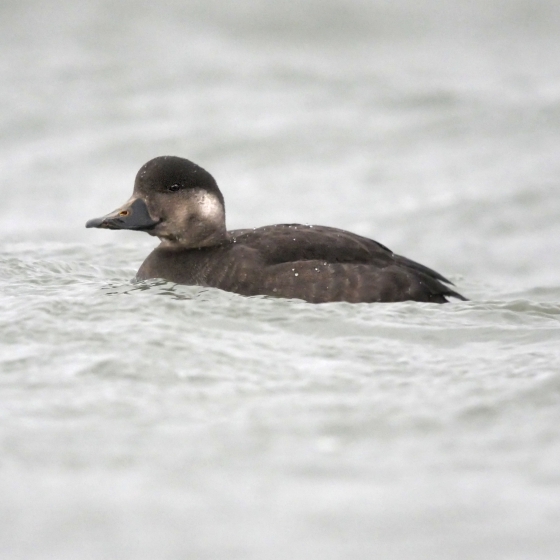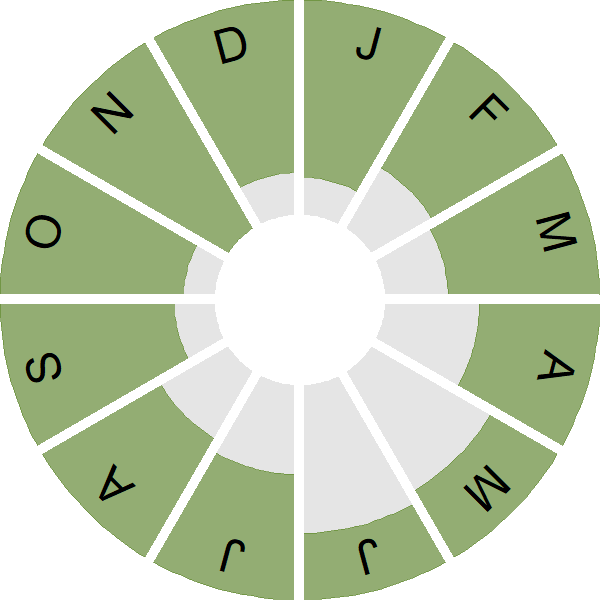Common Scoter

Introduction
This dark seaduck, which lacks any white in the wing, has small breeding populations in Scotland and Ireland. It is more familiar as a coastal and marine species outside of the breeding season.
Our small breeding population is restricted to a few larger lochs in Inverness-shire and Perthshire, parts of the Flow Country in north-east Scotland and a handful of loughs in western Ireland.
Large moulting flocks, involving birds from other breeding populations, form from summer into early autumn, often at traditional sites off Scotland's eastern coast and in Carmarthen Bay in Wales.

Key Stats
Identification
ID Videos
This section features BTO training videos headlining this species, or featuring it as a potential confusion species.
Scoters
Songs and Calls
Call:
Status and Trends
Conservation Status
Population Change
Although a widespread winter visitors to offshore UK waters, Common Scoter is a scarce breeding species with around 50 pairs breeding in northern Scotland; the species is monitored by the RBBP and the population trend is considered stable over the 25 years to 2019 (Eaton et al. 2021). However, it should be noted that the estimate of 52 pairs from the last national survey in 2007 represented a decline from the 95 pairs found during the previous survey in 1995 (Holling et al. 2010).
Distribution
Although small numbers breed in Britain & Ireland, the Common Scoter is to most birdwatchers a familiar winter visitor, present around much of the British & Irish coastline, though patchily distributed in northwest Ireland and western Scotland. There are also a scatter of inland records throughout central and southeast England that relate to singles or small groups that may turn up following poor weather.
Occupied 10-km squares in UK
2007/08–10/11
or view it on Bird Atlas Mapstore.
2008–11
or view it on Bird Atlas Mapstore.
European Distribution Map
Distribution Change
There has been a 39% winter range expansion since the 1981–84 Winter Atlas, with gains occurring throughout the range. The mixed pattern of gains and losses at inland sites reflects the chance events of migrant or storm-driven individuals dropping in at particular sites.
Change in occupied 10-km squares in the UK
from 1981–84 to 2007–11
or view it on Bird Atlas Mapstore.
from 1968–72 to 2008–11
or view it on Bird Atlas Mapstore.
Seasonality
Common Scoters are most abundant in winter but can be seen throughout the year, with early returning breeders appearing from July onwards.
Weekly pattern of occurrence
The graph shows when the species is present in the UK, with taller bars indicating a higher likelihood of encountering the species in appropriate regions and habitats.

Movement
Britain & Ireland movement
Foreign locations of birds ringed or recovered in Britain & Ireland
Dots show the foreign destinations of birds ringed in Britain & Ireland, and the origins of birds ringed overseas that were subsequently recaptured, resighted or found dead in Britain & Ireland. Dot colours indicate the time of year that the species was present at the location.
- Winter (Nov-Feb)
- Spring (Mar-Apr)
- Summer (May-Jul)
- Autumn (Aug-Oct)

European movements
EuroBirdPortal uses birdwatcher's records, such as those logged in BirdTrack to map the flows of birds as they arrive and depart Europe. See maps for this species here.
The Eurasian-African Migration Atlas shows movements of individual birds ringed or recovered in Europe. See maps for this species here.
Biology
Productivity and Nesting
Nesting timing
Egg measurements
Clutch Size
Survival and Longevity
Survival is shown as the proportion of birds surviving from one year to the next and is derived from bird ringing data. It can also be used to estimate how long birds typically live.
View number ringed each year in the Online Ringing Report.
Lifespan
Survival of adults
Biometrics
Wing length and body weights are from live birds (source).
Ring Size
Classification, names and codes
Classification and Codes
- Order: Anseriformes
- Family: Anatidae
- Scientific name: Melanitta nigra
- Authority: Linnaeus, 1758
- BTO 2-letter code: CX
- BTO 5-letter code: COMSC
- Euring code number: 2130
Alternate species names
- Catalan: ànec negre comú
- Czech: turpan cerný
- Danish: Sortand
- Dutch: Zwarte Zee-eend
- Estonian: mustvaeras
- Finnish: mustalintu
- French: Macreuse noire
- Gaelic: Lach-bheag-dhubh
- German: Trauerente
- Hungarian: fekete réce
- Icelandic: Hrafnsönd
- Irish: Scótar
- Italian: Orchetto marino
- Latvian: melna pile
- Lithuanian: juodoji antis
- Norwegian: Svartand
- Polish: markaczka (zwyczajna)
- Portuguese: negrola
- Slovak: turpan cierny
- Slovenian: crna raca
- Spanish: Negrón común
- Swedish: sjöorre
- Welsh: Môr-hwyaden Ddu
Research
Causes of Change and Solutions
Causes of change
The population trend, and hence the drivers of change, are unclear for this species.
More Evidence
More evidence from Conservation Evidence.com
Partners
Citing BirdFacts
If you wish to cite particular content in this page (e.g. a specific value) it is best to use the original sources as linked in the page. For a more general citation of the whole page please use: BTO (20XX) BirdFacts Species: profiles of birds occurring in the United Kingdom. BTO, Thetford (www.bto.org/birdfacts, accessed on xx/xx/xxxx).

